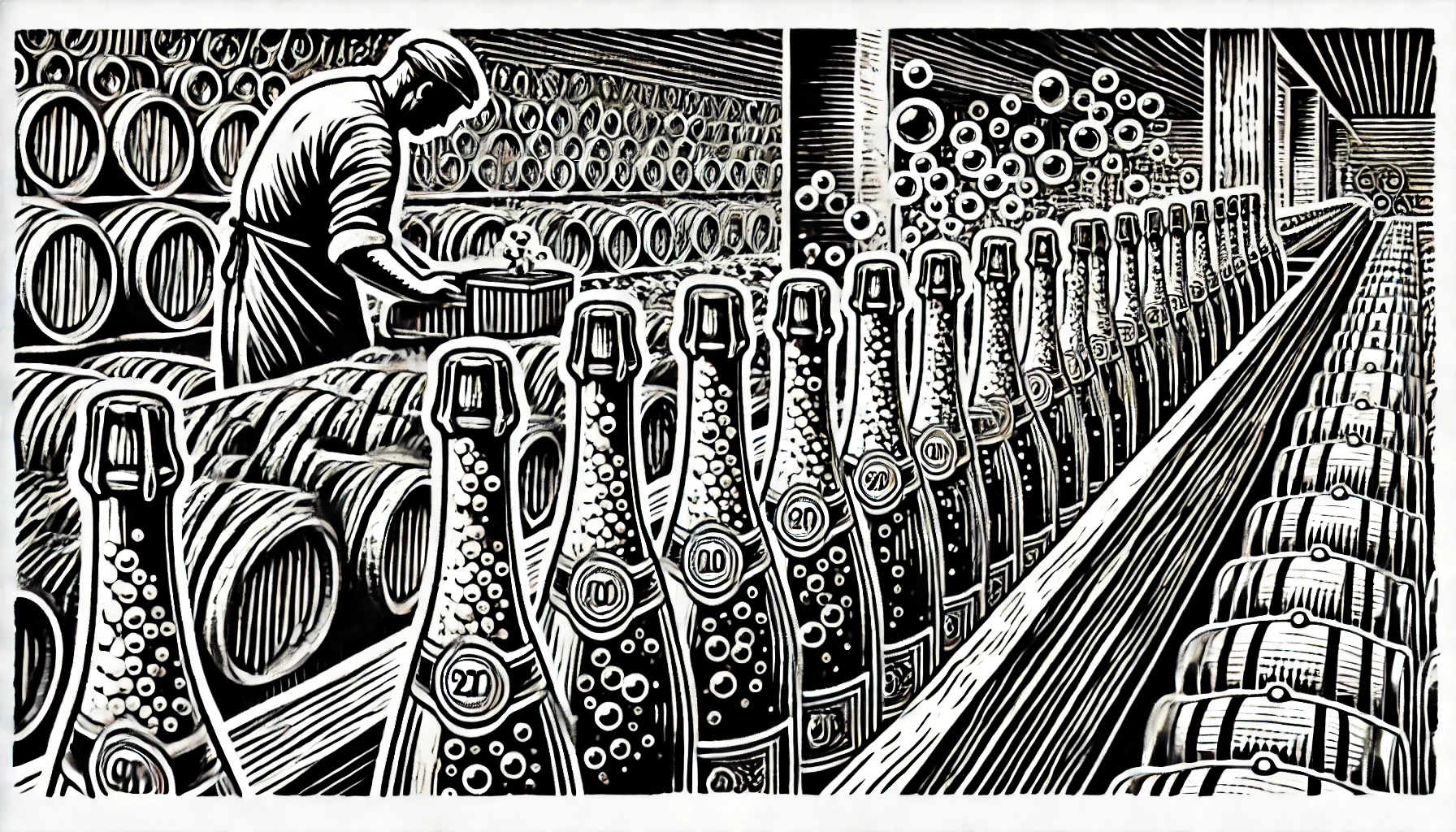
Secondary fermentation is a critical step in the production of sparkling wines, especially those made using the traditional method, also known as méthode champenoise. This process begins after the initial fermentation has created a base wine. At this point, winemakers add a mixture called liqueur de tirage, which consists of wine, sugar, and yeast. They seal the bottles immediately after adding this mixture, which then initiates the secondary fermentation inside the bottle.
The yeast consumes the added sugar, producing both alcohol and carbon dioxide. Since the bottle remains sealed, the carbon dioxide has nowhere to escape, so it dissolves into the wine, creating the bubbles characteristic of sparkling wines. Secondary fermentation does more than just create effervescence. It also plays a significant role in enhancing the complexity and depth of the wine. During this stage, the wine begins to age on lees, which are the dead yeast cells left over from fermentation. As the wine interacts with the lees, it develops more intricate flavors, such as brioche, toast, and nuttiness, which contribute to its overall richness.
How Long Does Secondary Fermentation Take for Wine?
The duration of secondary fermentation can vary depending on factors such as the style of wine, the yeast strain used, and the cellar conditions. In traditional method sparkling wines, secondary fermentation inside the bottle typically lasts anywhere from four to eight weeks. During this time, the yeast slowly consumes the added sugar, creating both alcohol and carbon dioxide. Once fermentation is complete, winemakers allow the wine to rest and develop on the lees before the final steps of disgorging and dosage, which ultimately influence the wine’s complexity, mouthfeel, and overall quality.
Aging
The length of time the wine spends aging on the lees directly impacts its flavor profile and quality. Some sparkling wines may undergo secondary fermentation and lees aging for just a few months, while premium sparkling wines, like vintage Champagne, may age for several years, developing deeper complexity and a finer mousse (the texture of the bubbles).
Winemakers must closely monitor the bottles during this phase to ensure the fermentation occurs as intended, as both the flavor and the texture of the wine depend on it. Secondary fermentation transforms still wine into a sparkling masterpiece, infusing it with bubbles and adding layers of complexity that are essential to high-quality sparkling wines.
Curious about more wine terms and insights? Visit our Wine Wiki section and explore the basic wine terms for expert definitions and tips!